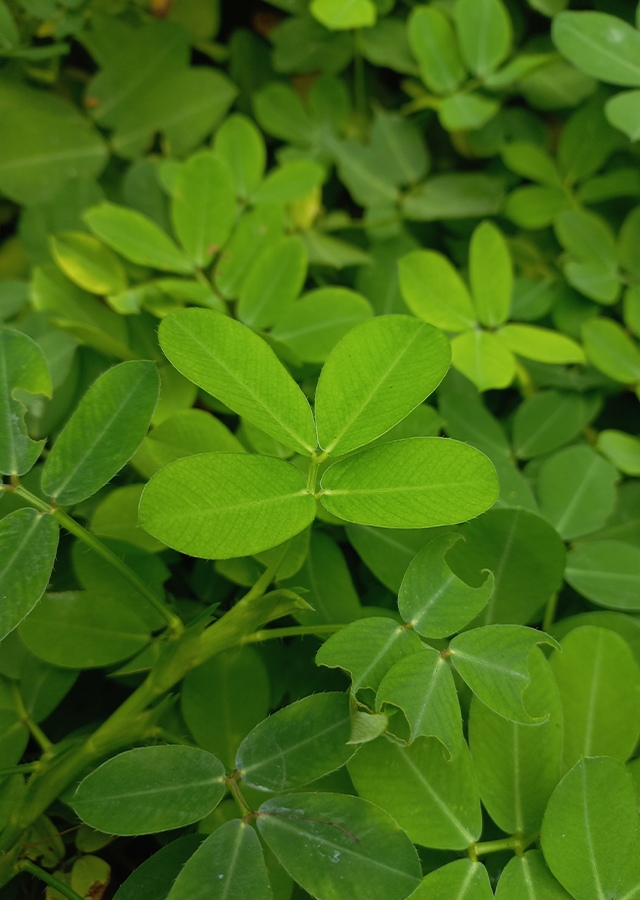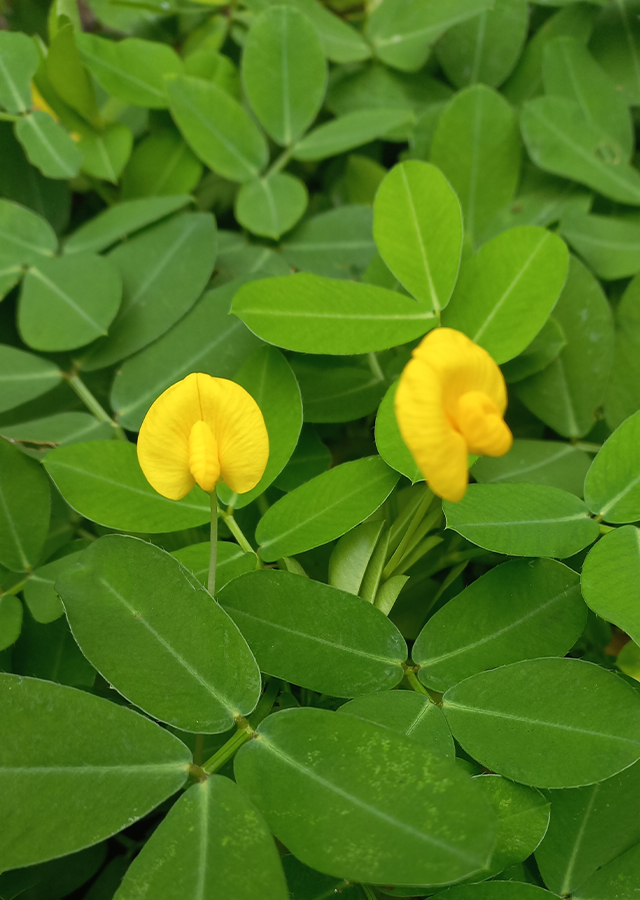Traditional Herbs from Arachis pintoi
treating_insect_and_colabang_bites
- Take enough ornamental bean leaves, wash them until clean.
- Crush them until they become a paste.
- Apply on the skin.
What is Arachis pintoi Looks like??



Parts of Arachis pintoi that could be used
- Leaf
Arachis pintoi Distribution
Arachis pintoi is a plant that originates from the South American continent, specifically Brazil. Initially this plant was introduced from Singapore by several golf course entrepreneurs, but now it is often found in office parks, shops, hospitals, housing complexes and street gardens. The benefits of the Arachis pintoi plant include inhibiting the growth of weeds/cover crops, preventing erosion, land rehabilitation (potentially helping soil fertility as a result of biological nitrogen fixation), and as animal feed (the leaves contain high levels of protein and good for digestion). Apart from that, the leaves of this ornamental bean are also used as traditional medicine in the Bikol area.Agroecology of Arachis pintoi
Ornamental beans grow in humid tropical and subtropical areas. This plant is found at an altitude of 1,400 m above sea level. It grows best in areas with annual daytime temperatures ranging from 22-28 °C, but can survive temperatures of 12-30 °C. Shoot growth is stopped by frost, but the plant can regrow from the tap root if the frost is light. This plant prefers an average annual rainfall of around 1,500-2,000 mm, but can survive rainfall of 900-3,000 mm, and can survive dry periods of up to 4 months. This plant grows best in shade, but is also tolerant of full sun. Grows well in most soil types, preferring fertile soil but does well in low fertility soil. These ornamental beans do not thrive well in heavy clay soils, or in any soil that forms a hard layer after rain, because the developing seed pods cannot penetrate the soil and die. This plant can tolerate low salt levels in the soil and prefers well-drained soil, but can tolerate waterlogging. Prefers a pH in the range of 5.4 - 6, tolerates 4.5 - 7.5.
Morphology of Arachis pintoi
- Distinct taproot. Dense network of fibrous roots, up to 20 cm long, with nodules that harbor nitrogen-fixing bacteria.
- Stems grow along the ground and are rooted at nodes.
- Pinnately compound leaves, each with 4 small oval leaves that are pubescent on the lower surface. Leaves fall off during prolonged dry seasons.
- Flowers are yellow, located in the axils of short leaves and grow inwards soil.
- Fruits are one-seeded underground pods, light brown in color, 1 - 1.5 cm long, 6 - 8 mm in diameter.\u00a0
Cultivation of Arachis pintoi
- Propagation of this plant can be done using seeds, cuttings and stolons.
- If the seeds\u00a0are still fresh they have a high level of dormancy, which can be reduced by drying the seeds at a temperature of 35 - 40 \u00b0C for 10 days. When planting plants in new areas, the seeds should be inoculated with a specific strain of Bradyrhizobium, which is different from that used in commercial peanuts Sow the seeds in the \u2013 nursery Well prepared seeds are necessary, but not essential. Seeds must be sown 2 - 6 cm deep.
Arachis pintoi, more details :
Chemical Content of Arachis pintoiEssential oils, tannins, lignin.
Benefits of Arachis pintoi
The leaves are crushed and applied to insect and centipede bites. Has activity as an antioxidant and anthelmintic
Simplisia of Arachis pintoi
Another Facts for Arachis pintoi :
Synonym of Arachis pintoi-
Habitus of Arachis pintoi
Herb. Annual herb maximum height 0.2-0.5 m
Habitat of Arachis pintoi
- Forest", "Roadside", "Grassland", "Land
No comments:
Post a Comment